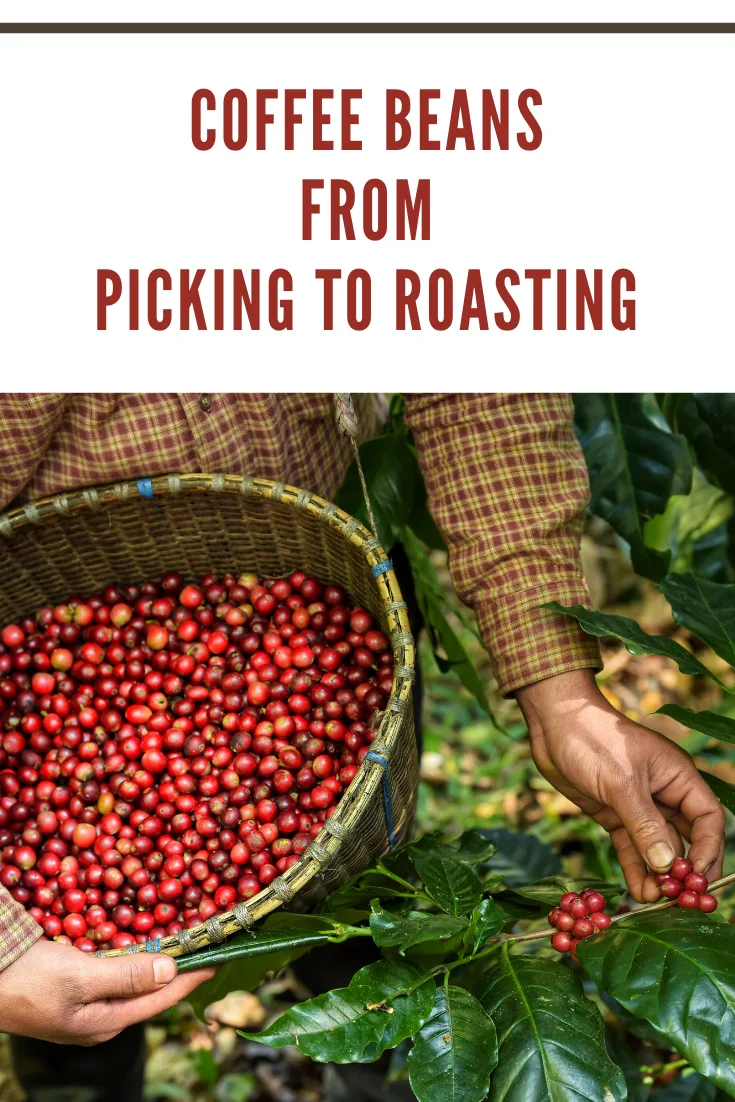From Bean to Brew: Coffee’s Journey from Picking to Roasting
Whether you prefer French Press, Drip, Cold Brew, or pods for your daily coffee fix, understanding the journey of coffee beans from picking to roasting adds a new layer of appreciation for your cup of Joe.

The Love for Coffee Worldwide
Coffee is one of the most beloved beverages globally. If you’re reading this, chances are you’re a coffee enthusiast too. That invigorating boost from your morning coffee is unparalleled. According to the International Coffee Organization, over 2.25 billion cups of coffee are consumed worldwide each day. However, the journey coffee undergoes to make its way to your kitchen is often overlooked, yet it’s a tale of meticulous effort and dedication.
Two Main Types of Coffee Trees
There are over 100 types of coffee trees worldwide, but the coffee we drink comes primarily from two varieties: the Coffea arabica tree and the Coffea canephora tree, commonly known as Robusta. Arabica beans makeup about 70% of the global coffee market, favored for their smooth, sweet flavor. The remaining 30% is Robusta, known for its higher caffeine content and robust flavor, often used in blends and instant coffee. As James Hoffmann, a renowned coffee expert, states,
“Arabica coffee is known for its nuanced flavors and aromatic properties, making it the preferred choice for many coffee connoisseurs.”
The Journey of Coffee: From Planting to Roasting
Step 1: Planting the Seeds
The journey begins with planting the coffee bean, which is essentially a seed. Ideal planting occurs between February and March in shaded nurseries filled with fragrant flowers. These seeds eventually grow into full-fledged coffee trees. “The right environment and timing are crucial for growing healthy coffee plants,” explains horticulturist Maria Hernandez.
Step 2: Harvesting the Cherries
It takes approximately 3-4 years for coffee trees to bear fruit. These fruits, known as coffee cherries, turn bright red when ready for harvest. Prior to this, they are green and small. Harvesting methods vary:
- Strip Picking: All cherries are picked at once, either manually or with a machine.
- Selective Picking: Only ripe cherries are picked by hand, a labor-intensive method reserved for finer Arabica beans. According to the National Coffee Association, “Selective picking ensures only the best cherries are harvested, contributing to the superior quality of Arabica coffee.“
Step 3: Processing the Cherries
To prevent spoilage, cherries are processed immediately after harvesting using one of two methods:
- Dry Method: Traditional and labor-intensive, this method involves spreading cherries under the sun until they reach a moisture content of 11%. “This method requires constant attention and care to ensure optimal drying,” notes coffee farmer Carlos Mendoza.
- Wet Pulping: A faster, machine-based method that separates the skin and pulp from the beans. For a detailed look at this process, check out this YouTube video.

Step 4: Drying the Beans
After processing, the beans are dried under the sun for three days, preparing them for storage and further processing.
Step 5: Milling the Beans
Milling involves several steps:
- Hulling: Removes the parchment layer from wet-processed coffee and the entire dried husk.
- Polishing: Optional, this step removes any silver skin remaining on the beans.
- Grading and Sorting: Beans are sorted by weight and size, readying them for roasting or export. As coffee expert David Schomer explains, “Grading ensures consistency in size and quality, which is essential for uniform roasting.”
From Export to Your Cup
Once milled, coffee beans are exported, eventually making their way to your local store or favorite coffee shop. For those who enjoy pod coffee, additional steps include grinding the beans to a uniform size and packaging them in pods for consistency and quality.
According to a report by Statista, global coffee pod sales reached $25.9 billion in 2020, highlighting the popularity of this convenient coffee option.
Final Thoughts and Call-to-Action
The next time you savor your morning coffee, take a moment to appreciate the arduous journey it has undertaken. From the dedicated farmers to the intricate processing methods, each cup is a testament to hard work and passion.
Want to enjoy the finest coffee at home? Explore a range of coffee products through my Amazon affiliate link. Discover the perfect coffee that matches your taste and supports this blog.
